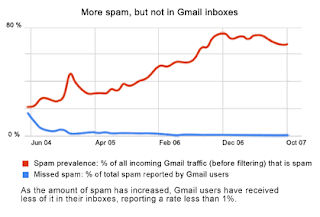Posted by Steve Yegge, Software EngineerOur Seattle/Kirkland engineering office just celebrated its third birthday! And like our friends in New York
who recently commemorated an anniversary, we too had a very special cake to mark the occasion, as you can see here.

This is the home of many great products, including Google Talk, Google Pack, Sitemaps, Site Optimizer, and Google Toolbar for Firefox. If we do say so ourselves, we have also made major contributions to the core search engine, Google Maps, Google's advertising technology, Video Search and Video Ads. There's all kinds of work going on in Google Seattle/Kirkland, and
we're always looking for great people to help us out. So to celebrate our birthday, we're excited to announce that we just opened
a Fremont office (just north of downtown) as the latest addition to our family of Seattle-area locations.
We don't like to brag here in the Pacific Northwest, but unlike Mountain View headquarters, we actually have a view of the mountains.
Kirkland is a lovely city nestled on Lake Washington, with views of the water, the Seattle skyline, and of course
Mount Rainier, which is by far the area's most impressive (and hopefully most dormant) volcano.
Kirkland features numerous great local restaurants, shops, sports bars, nightclubs, spas and salons. And we're just minutes from
Seattle -- a beautiful city with a great music scene, two side-by-side stadiums, and a famous miniature replica of Toronto's space needle. Plus we have no state tax. Not that we would make a big deal out of something like that, but it's *definitely* not 8.75% like our neighbors to the south ...
What else can we tell you? We have three lovely
ski resorts within an hour's drive, including Snoqualmie Pass, the nation's largest night-skiing facility. And the world-famous Whistler/Blackcomb resort is just a few hours' drive across the Canadian border. We're proud of our great football team and our great baseball team. Oh, and if you'd like to buy the Sonics, please contact Clayton Bennett.







